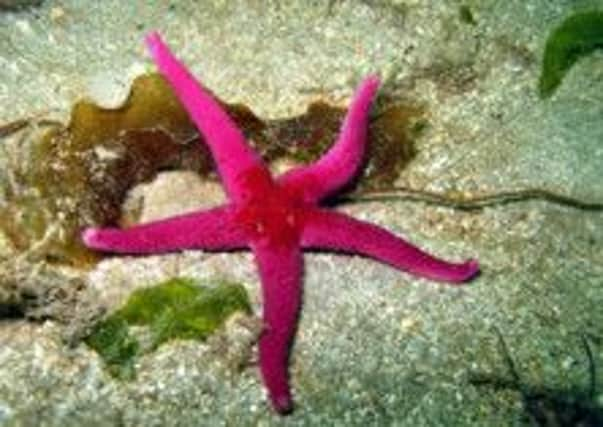Is tide turning in fight to save what lies beneath the waves?


The view out to sea from Runswick Bay rarely changes.
Occasionally a morning mist might reduce the visibility a little, but otherwise the tide appears to ebb and flow much as it’s always done. It’s part of the problem for environmentalists desperate to raise awareness of the threats to the plants and animals which lie beneath the waves.
While the North Sea is incredibly rich in marine wildlife, it faces huge pressure from shipping, oil extraction, wind farm development and centuries of intensive fishing and the last few years have been marred by missed opportunities.
Advertisement
Hide AdAdvertisement
Hide AdWhen the Marine and Coastal Access Act of 2009 was introduced it seemed like the tide was turning in favour of the campaigners. With only two per cent of the UK waters the subject of any protection and less than 0.001 per cent considered fully protected, the idea was to vastly increase the safeguarded area.
Ministers promised to introduce a series of Marine Conservation Zones and all that remained was for experts to pinpoint the exact locations. In all, 127 zones were identified, including seven in Yorkshire. However, just ahead of the list being rubber-stamped, the goal posts were changed. In the end only 27 of the suggested sites were designated and none of those in Yorkshire made the cut. The news was both disappointing and frustrating for the county’s Wildlife Trust which had been at the forefront of the campaign. However, it seems they may now get a second chance to state their case.
The Government, aware of the bad feeling caused by its last foray into marine protection, has just announced that a further consultation will be launched in the New Year on a further 37 sites, including Runswick Bay, Holderness Inshore and Compass Rose.
“At Runswick Bay, kelps and red seaweeds dominate the shallow rocky areas providing refuge for all manner of marine animals, including crabs, anemones and starfish,” says Rob Stoneman, Yorkshire Wildlife Trust’s chief executive. “Elsewhere, areas of deeper water are important spawning and nursery grounds for herring, sprat, cod and plaice.
Advertisement
Hide AdAdvertisement
Hide Ad“In the Holderness Inshore area, which stretches from Skipsea to Spurn Point, eight species of crab have been recorded and the seafloor is a rich mosaic of habitats home to sponges, starfish and a huge array of fish.
“Then you have Compass Rose, 20 miles off the coast, which is vital for plaice, herring, lemon sole, sand eels and sprats and also whales and dolphins.”
Ahead of the consultation launch, the Yorkshire Wildlife Trust is appealing for increased public support to raise awareness of the three proposed zones by asking people to become a Friend of Marine Conservation Zones. While the trust is keen to stem the damage done to the seabed by trawlers, it also insists that far from pitching environmentalists against the fishing industry, they would be mutually beneficial.
There is a growing body of evidence that suggests protection zones don’t just help maintain existing levels of marine populations, but can help to reverse a decline of specific species. However, in countries likes Australia, which has enjoyed protection over a number of years, the key has been an entire network of zones, spread across a large area, which has allowed populations to migrate.
Advertisement
Hide AdAdvertisement
Hide Ad“Together these three areas are an essential part of a network of sites that are managed for wildlife. This is an easy win-win,” say Rob. “An ocean rich in wildlife, teaming with fish, regal with great whales, resplendent with sharks and porpoises is an ocean that can sustain all of us. Overfishing is madness, because it kills its own industry. We have to designate and protect it now.”
www.ywt.org.uk